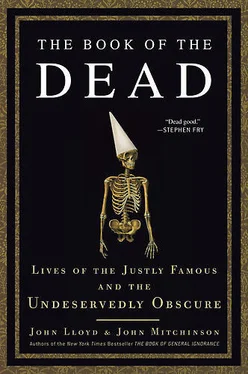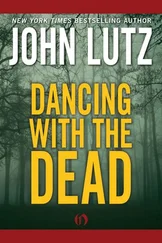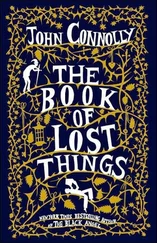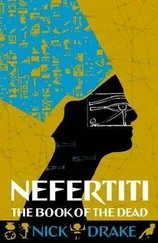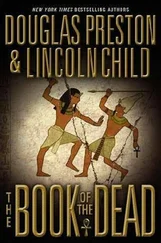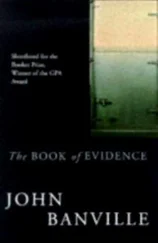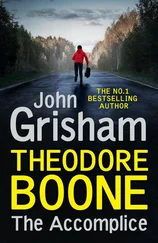Ironically, Mary didn’t consider herself “black” at all. She came from Jamaica, where the subtleties of skin coloring mattered intensely. She called herself a Creole “with good Scotch blood coursing in my veins.” Her father was white and her mother probably mixed race. In Jamaica this meant she was a Free Colored, less constrained and more socially acceptable than the black former slaves, but still definitely not white. As she wrote in her memoir: “I am only a little brown—a few shades duskier than the brunettes whom you all admire so much.” And she was fiercely proud of being British. One of the things that make her autobiography so compelling is the firsthand account of nineteenth-century racism and her sense of disappointment that skin color should matter at all. There is one powerful exchange from her time in Panama where a “sallow-looking” American toasts her for all she has done to stem disease in the colony, adding: “If we could bleach her by any means we would—and thus make her as acceptable in any company as she deserves to be.” Mary’s response is magnificent:
Providence evidently made me to be useful, and I can’t help it. But, I must say, that I don’t altogether appreciate your friend’s kind wishes with respect to my complexion. If it had been as dark as any nigger’s, I should have been just as happy and as useful, and as much respected by those whose respect I value; and as to his offer of blessing me, I should, even if it were practicable, decline it without any thanks. As to the society which the process might gain me admission into, all I can say is, that, judging from the specimens I have met with here and elsewhere, I don’t think that I shall lose much by being excluded from it. So, gentlemen, I drink to you and the general reformation of American manners.
The Wonderful Adventures deserves its newfound status as a modern classic. It was written for money and can be monstrously self-promoting in places, but at its best—in the tender accounts of the young men who died in her arms, or by abruptly breaking off from describing battlefield carnage to give a recipe for a refreshing punch—it is as lively and original as the lady herself.
Despite all her troubles, Mary lived and died a happy woman. She may never have heard of Epicurus but she instinctively embodied his central proposition that true pleasure comes from conquering pain and fear. And in the other sense of the word, what could be more Epicurean than a bar and restaurant on a battlefield? She left no grand edifice, but she left an unforgettable voice.

Everything we know about Mary Frith, better known as Moll Cutpurse (about 1584–1659), suggests that her voice was equally unforgettable. For one thing, she had to make herself heard above the roar of the bear pit. Standing among the office blocks and art galleries of London’s Bankside today, it’s hard to imagine that four hundred years ago, in a small street still called Bear Gardens, ferocious battles were fought in a circular arena that held more than three thousand people. Here could be seen the most formidable fighting bears of the era—ursine celebrities like Ned Whiting, Sackerson, or Blind Harry Hunks—taking on a succession of dogs, swatting them from wherever their jaws had fastened hold, battling it out until either they or the dogs collapsed from exhaustion. As well as being a noisy, gruesome spectacle, bear baiting was big business. A lot of money could be made betting on the outcome.
It was a brutal, often dangerous pastime. The animals were tethered to a stake in the center of the arena, held by a 15-foot chain or rope. The breeders stood in a circle, just out of range, holding their dogs by the ears. Once they were let loose, the contest would rage for as long as an hour. It wasn’t unusual for wounded animals to break free and chase their owners around the pit. Injuries were common; health and safety rules rudimentary. This was a man’s sport: the bear pit was no place for a woman.
But Mary Frith wasn’t going to let that put her off. She dressed, drank, smoked, and swore like a man; and the bear pit was her passion. She bred mastiffs—the muscular, squat-faced, short-necked, strong-jawed ancestors of today’s bulldogs. In her own account of her life, published in 1662, three years after her death, we learn that her dogs were pampered like the children she never had (or wanted), each of them sleeping in their own bed, complete with sheets and blankets, and fed on a special food she boiled up herself.
Mary had grown up just over the river, the daughter of a cobbler in Aldersgate Street, but Southwark was her spiritual home. The south bank of the Thames in the early seventeenth century was London’s pleasure center, though very much not what Epicurus had in mind. Two pence got you into the bear garden; six pence, an evening at the theatre or an hour with a whore. Beer was a penny a pint; tobacco, three pence a pipe load; a decent tavern meal about the same. Given that the average wage was about seven shillings a week, it’s not surprising that theft and gambling were rife. The entertainments brought in huge numbers of gamblers: An estimated 10 percent of the entire population of London visited the theatre or the bear garden every day. In the narrow maze of streets, gangs of professional criminals worked their routines assiduously.
Mary Frith started out as a pickpocket. We first hear of her as a teenager in 1600, when she and two female accomplices were accused of stealing “2s and 11d in cash, from an unknown man at Clerkenwell.” Other arrests followed, and despite her protestations in her autobiography that she “never Actually or Instrumentally cut any Mans Purse,” she certainly worked as a part of a gang who did. But Mary had grander ambitions than a life of petty crime. By 1608 she was performing in the streets and taverns of Southwark. Dressed as a man, in a doublet and leather jerkin, a sword hanging by her side and a pipe clamped between her teeth, she would strum her lute, sing rude songs, dance jigs, and tell stories. Perhaps the cross-dressing began as part of her pickpocket routine—it would certainly have made it easier it to blend into a crowd—but it soon became her calling card.
A woman dressing as a man was far more shocking then than now. It was done in the theatre, of course—all the actors were men and boys in any case—but to do it openly on the streets was more than just an affront to the natural order of things. It was breaking the law. Moll Cutpurse, Mary’s alter ego, became an overnight sensation. She was more like a contemporary conceptual artist than the stage performers she hung around with—not only did she dress and perform as a man, she lived like one, too. From the tavern to the bear pit, her art was her life. By 1610, she had inspired one of the first female celebrity biographies, The Madde Prancks of Merry Moll of the Bankside with Her Walks in Man’s Apparel and to What Purpose , by the playwright John Day. In 1611 two of the most successful writers of the age, Thomas Dekker and Thomas Middleton, asked her to close a performance of the play they had written about her, The Roaring Girl. This was the big time—an audience of two thousand people watching Moll Cutpurse playing herself.
This stunt proved too much for the authorities. Mary was arrested for immoral behavior and thrown into the correction house at Bridewell, where she was subjected to the punishment usually reserved for prostitutes. She was soundly whipped and then forced to beat the stalks of hemp plants to make fibers for rope. But if this was intended to make her see the error of her ways, it failed abysmally. After three months, she reemerged and took up where she had left off. On Christmas Eve, 1611, she was arrested again for exactly the same offense, “to the disgrace of all womanhood.”
Читать дальше
